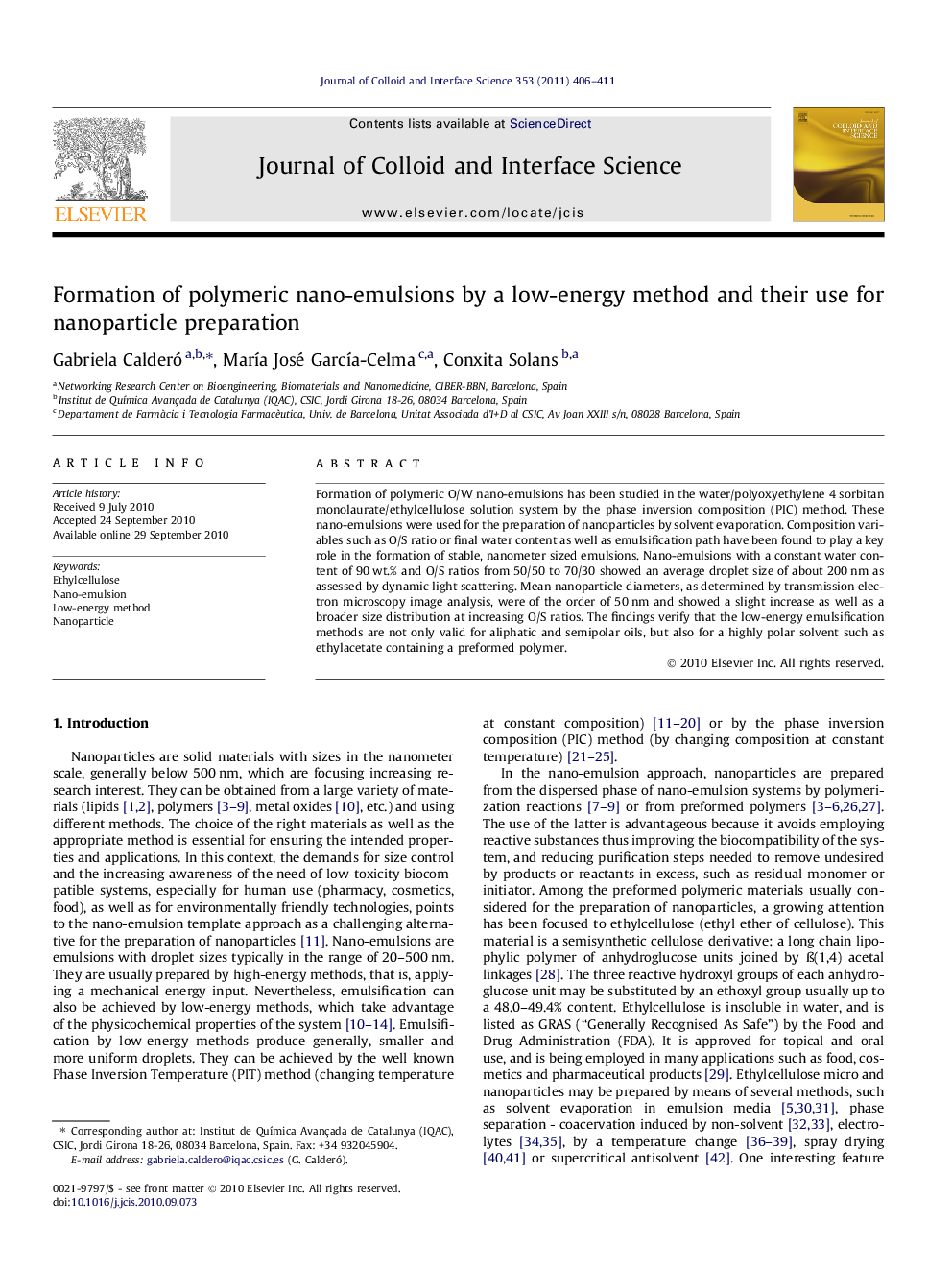| Article ID | Journal | Published Year | Pages | File Type |
|---|---|---|---|---|
| 609172 | Journal of Colloid and Interface Science | 2011 | 6 Pages |
Formation of polymeric O/W nano-emulsions has been studied in the water/polyoxyethylene 4 sorbitan monolaurate/ethylcellulose solution system by the phase inversion composition (PIC) method. These nano-emulsions were used for the preparation of nanoparticles by solvent evaporation. Composition variables such as O/S ratio or final water content as well as emulsification path have been found to play a key role in the formation of stable, nanometer sized emulsions. Nano-emulsions with a constant water content of 90 wt.% and O/S ratios from 50/50 to 70/30 showed an average droplet size of about 200 nm as assessed by dynamic light scattering. Mean nanoparticle diameters, as determined by transmission electron microscopy image analysis, were of the order of 50 nm and showed a slight increase as well as a broader size distribution at increasing O/S ratios. The findings verify that the low-energy emulsification methods are not only valid for aliphatic and semipolar oils, but also for a highly polar solvent such as ethylacetate containing a preformed polymer.
Graphical abstractTEM image of negatively stained polymeric nanoparticles obtained, showing mean sizes below 50 nm.Figure optionsDownload full-size imageDownload high-quality image (190 K)Download as PowerPoint slideResearch highlights► Polymeric nano-emulsions have been prepared by a low-energy method at a constant temperature of 25 °C with higher oil/surfactant (O/S) ratios (e.g. 70/30) than previously reported and high polymer concentration in the oil phase. ► Use of biocompatible components and a non-toxic (neither chlorinated nor aromatic) solvent. ► Polymeric nanoparticles obtained from these nano-emulsions by solvent evaporation with sizes below 50 nm.
